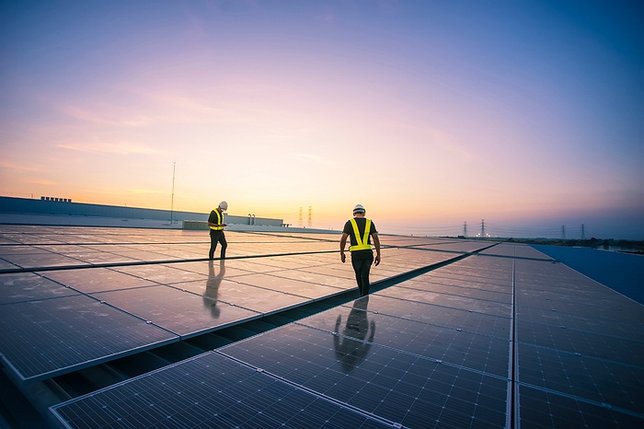With Earth Day around the corner and the U.S. having experienced $92.9 billion in damage from weather and climate disasters during 2023, the personal-finance website WalletHub today released its report on 2024’s Greenest States, as well as expert commentary, in order to showcase the states that best protect our environment.
WalletHub compared the 50 states in terms of 25 key metrics that speak to the current health of the environment and residents’ environmental-friendliness. The data set ranges from green buildings per capita to the share of energy consumption from renewable resources.
Greenness of New York (1=Greenest, 25=Avg.):
- Overall Rank: 3rd
- 5th – Soil Quality
- 14th – Water Quality
- 12th – LEED-Certified Buildings per Capita
- 21st – % of Renewable Energy Consumption
- 2nd – Energy Consumption per Capita
- 1st – Gasoline Consumption (in Gallons) per Capita
Expert Commentary
What policies can state and local authorities pursue to make their communities more environmentally friendly?
“States can commit to making polluters pay the true cost of the emissions that drive climate change. They can also facilitate the green infrastructure needed by the electricity and transportation systems. Cities can make it easier to build housing in areas that require less transportation and can make it easier to choose non-car modes of transportation.”
Derek Lemoine – Professor, University of Arizona
“Increasing public investments in local infrastructure, including providing fossil-fuel-free low-income housing options, investing in renewable energy for all households, supporting local food, and investing in public education – are all needed to support communities to be environmentally friendly. Policies are needed to ensure families and households are not struggling with the basics so that people can make environmentally friendly choices including reducing reliance on fossil fuels and plastics.”
Jennie C. Stephens, Ph.D. – Professor, Northeastern University
Is there an inherent tradeoff between protecting the environment and promoting economic growth?
“I argue no, in my classes and my research. We already know what we need to do regarding most of the environmental problems we face, we just have to implement the solutions. You do not have to try that hard to see that transitioning towards a ‘greener’ economy is a major growth opportunity for businesses, estimated in the trillions of dollars by some estimates. So that alone should inspire confidence in businesses, government, and the public alike. One major consideration is recognizing that most green solutions do not necessarily require immediate and radical changes. These types of things – banning gas vehicles, gas stoves, etc. – make people nervous and opposed to finding solutions to environmental issues. Incremental progress is still progress and if we continually improve our environmental performance, eventually the ‘green’ option will become the default….with lots of economic growth along the way.”
Jordan P. Howell, Ph.D., MBA – Associate Professor; Director, Rowan Center for Responsible Leadership, Rowan University
“There may be some trade-off between green policies and having the economy produce the most output it possibly could over the next few years, but it is not clear that the trade-off is sharp. Also, green policies are critical to ensuring that economic growth is sustained over time and translates into growth in well-being.”
Derek Lemoine – Professor, University of Arizona
What is the single most impactful thing an individual can do to reduce their effect on the environment?
“The fastest and most affordable way for an individual to reduce their environmental impact is to be more energy efficient in their homes and businesses. More efficient LED lighting, more efficient HVAC and appliances, and more efficient building design is a very doable win-win-win-win: (1) save money on your utility bills, (2) avoid and reduce pollution from fossil-fuel generating plants, (3) create installation jobs for bigger projects, and (4) keep our energy dollars in our communities. Who thinks that it’s a good idea to waste energy and pay higher utility bills?”
Howard A. Learner – Executive Director, Environmental Law & Policy Center; Adjunct Professor, University of Michigan Law School
“First, I want to say that I think there has been way too much pressure on the individual consumer to ‘fix’ environmental problems. Many of the biggest issues we face are systemic, but people are made to feel as though they as individuals are responsible for a given problem and they must fix the problem. Having said that, clearly, we are not powerless as individuals. I think the biggest thing any one person can do is to be a more ‘conscious consumer’ – do you really need to buy that new thing? Can you buy it used (maybe saving money and environmental resources)? What if you paid a little bit more for a higher quality “thing” that will last longer and perform better? Would it really be that bad if you ate less meat, or committed to a vegetarian diet for a few days a week (along with all the other health benefits?) Perhaps if we all make these types of incremental changes, collectively we improve lots of areas of environment, social impact, and economic growth too.”
Jordan P. Howell, Ph.D., MBA – Associate Professor, Rowan University










